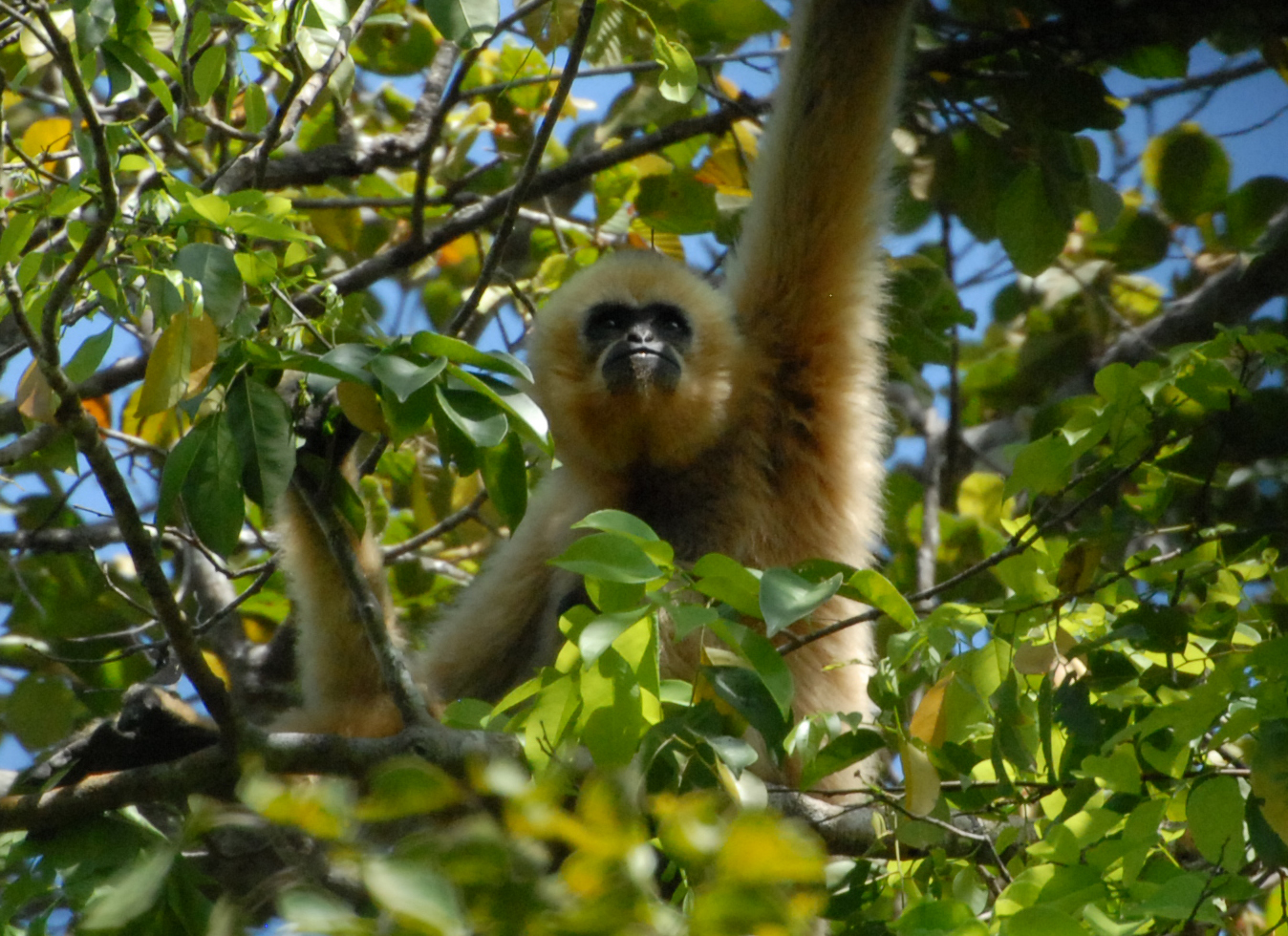We’re on a mission to save gibbons.
We stand with them against the threats they face, from habitat destruction to the illegal pet trade. Southeast Asia’s forests have woken up to gibbon song every sunrise for the past 17 million years, and we intend to keep it that way.
The SSA is a community of over 120 experts from 23 countries. Between us, we have the greatest repository of gibbon knowledge in the world.
Some of us study their behaviour, their biology, and their habitat; we track gibbons in the wild to learn their numbers and location, and to help them thrive there. Others protect areas of forest and educate communities about how wonderful gibbons are, supporting them in preserving their local wildlife. We study diseases that affect wild populations, so we can better protect them.
Gibbons are relatively unknown and little understood, so we raise public awareness of their needs, traits, and threats.
We work to disrupt the pet trade, helping authorities bring poachers to justice, and we return captured gibbons to the wild. If that’s not possible, we give them the best possible life in captivity. Some of us work in zoos, or rescue and rehabilitation centres, making sure the gibbons are happy and healthy; working up close and personal with them helps us to better understand them and to protect their wild cousins.
The SSA has also strengthened co-ordination among gibbon conservationists worldwide, sharing resources and knowledge to make their work more effective. We provide direct technical support to conservationists in the field (or rainforest!) – and we keep IUCN guidelines up to date.
Together, we can really make a difference not just to gibbons, but to their habitat and the animals they share it with: millions of square kilometres across ten countries.

EDUCATING GIBBON NEIGHBOURS
We’re on a constant mission to recruit more gibbon allies! So we run workshops and outreach programmes to educate communities who live alongside them. Plenty of people don’t know anything about gibbons. Even in their habitat countries, people think they’re monkeys (they’re not: they’re apes!)
Luckily for gibbons, they’re very easy to fall in love with. Once their human neighbours get to know them, they can make a massive difference to gibbons’ chances of survival.
A GLOBAL NETWORK
When one of our experts has a problem or a question, it’s likely that another expert has the answer; our job is to join up the dots. Our network links scientists and conservationists around the world both to solve specific problems, and to organise on a massive scale.
In April 2018, we contributed to an historic meeting in China: the first ever gibbon meeting in a habitat country to bring together protected area managers, zoos, NGOs and universities under one roof. Over a hundred participants from China, India and the UK came together to share ideas and coordinate their work in captive management and wild conservation. This was the first of many such inclusive, productive and hopeful meetings in gibbon habitat countries.
Zoos have an important role in conservation and the SSA has members in Europe (EAZA), USA (AZA Gibbon SSP) and Australia (ZAA).
EDUCATING TOURISTS AND VOLUNTEERS
Lots of animal lovers who visit Southeast Asia can accidentally damage gibbons’ welfare, so we provide guidelines on responsible tourism and volunteering. While there’s money to be made from tourists holding captive gibbons, poachers will continue to take them from the wild. It’s crucial that people learn how to avoid unethical wildlife attractions.
FUNDING
We help fund on-the-ground conservation work. Recently we’ve supported conservation and community education projects in Indonesia, Bangladesh, Malaysia and India. Getting access to funding can be a long process – so when conservationists identify a sudden or pressing threat to a wild gibbon population, our emergency Save the Gibbon Fund enables them to act before it’s too late.
RESOURCES FOR CONSERVATIONISTS
We provide a huge, free database of guidelines, action plans, reports, software and research tools, so gibbon experts the world over have access to the latest resources.
It’s very important for gibbons that their conservationists follow best practice guidelines. Because we’re still learning about them, the latest research can change recommendations on how to provide the most effective care.
For example, we provide up-to-date guidelines in five different languages about translocation. This is when gibbons have to be moved from an unsafe forest (threatened by logging or poaching) to a protected area. Following these guidelines makes the journey as stress-free as possible, and maximises the gibbons’ chances of success in their new home.
Join the fight
Giving gibbons a little time or money will make all the difference. We’d love you to learn more about these amazing animals.
Learn more about how you can help, or read about the gibbons – then pass it on!
